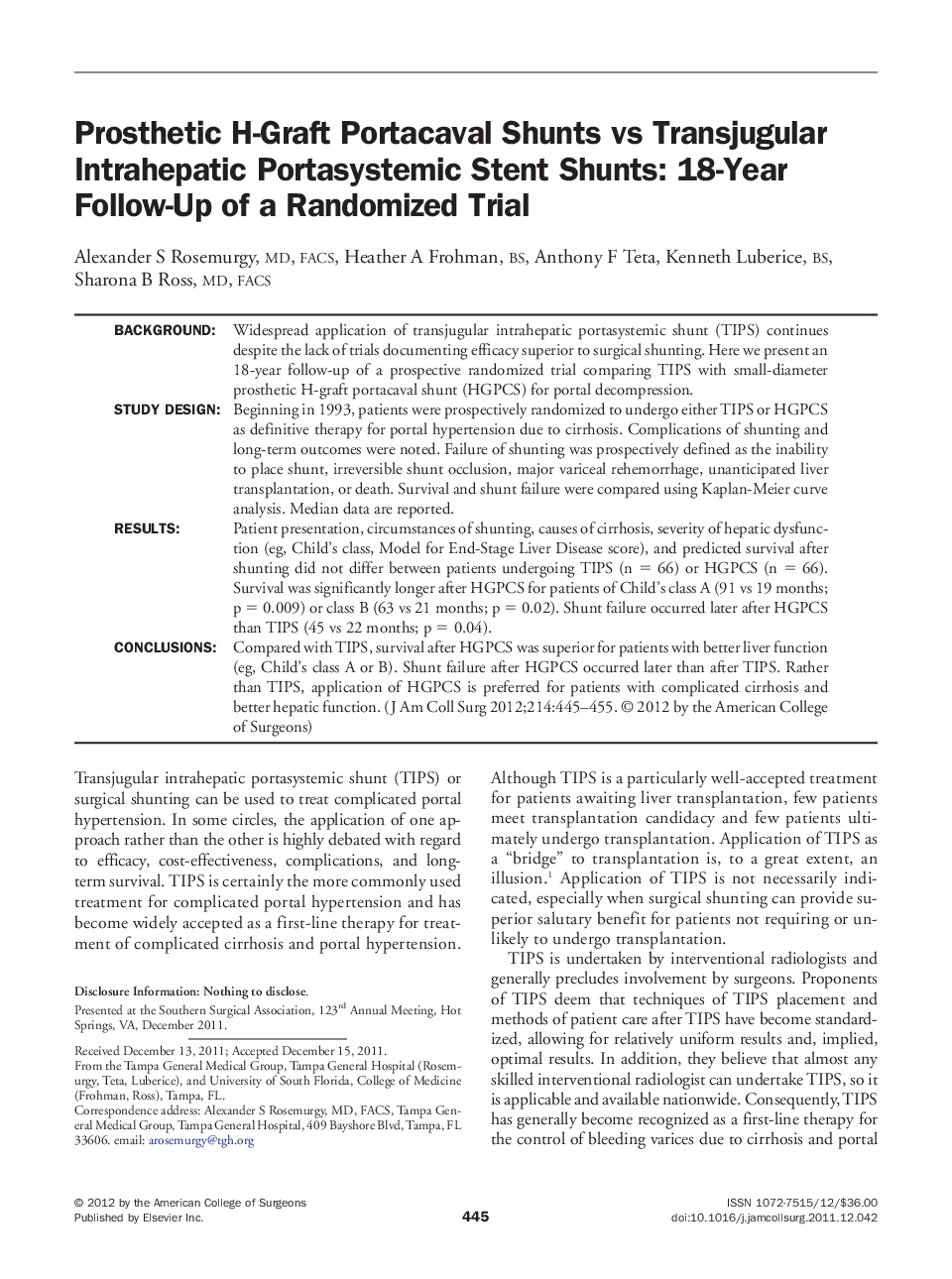| Article ID | Journal | Published Year | Pages | File Type |
|---|---|---|---|---|
| 4293577 | Journal of the American College of Surgeons | 2012 | 9 Pages |
BackgroundWidespread application of transjugular intrahepatic portasystemic shunt (TIPS) continues despite the lack of trials documenting efficacy superior to surgical shunting. Here we present an 18-year follow-up of a prospective randomized trial comparing TIPS with small-diameter prosthetic H-graft portacaval shunt (HGPCS) for portal decompression.Study DesignBeginning in 1993, patients were prospectively randomized to undergo either TIPS or HGPCS as definitive therapy for portal hypertension due to cirrhosis. Complications of shunting and long-term outcomes were noted. Failure of shunting was prospectively defined as the inability to place shunt, irreversible shunt occlusion, major variceal rehemorrhage, unanticipated liver transplantation, or death. Survival and shunt failure were compared using Kaplan-Meier curve analysis. Median data are reported.ResultsPatient presentation, circumstances of shunting, causes of cirrhosis, severity of hepatic dysfunction (eg, Child's class, Model for End-Stage Liver Disease score), and predicted survival after shunting did not differ between patients undergoing TIPS (n = 66) or HGPCS (n = 66). Survival was significantly longer after HGPCS for patients of Child's class A (91 vs 19 months; p = 0.009) or class B (63 vs 21 months; p = 0.02). Shunt failure occurred later after HGPCS than TIPS (45 vs 22 months; p = 0.04).ConclusionsCompared with TIPS, survival after HGPCS was superior for patients with better liver function (eg, Child's class A or B). Shunt failure after HGPCS occurred later than after TIPS. Rather than TIPS, application of HGPCS is preferred for patients with complicated cirrhosis and better hepatic function.
